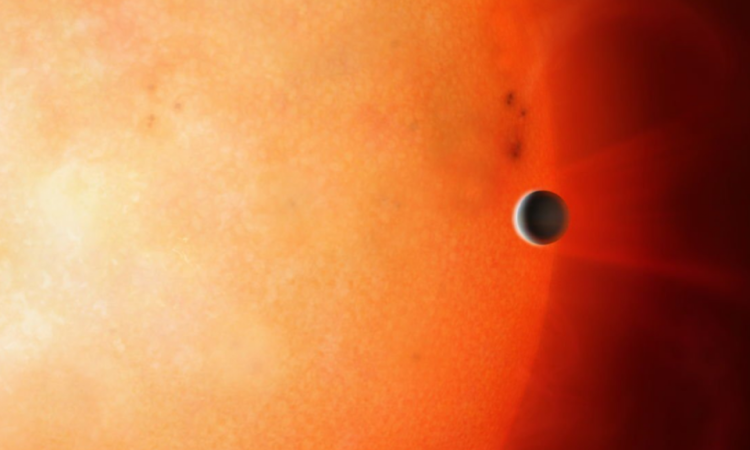
TOI-849b is an exoplanet the size of Neptune but incredibly rocky. We may have found the first “Chthonian planet” 730 light-years away
TOI-849b is an exoplanet located about 730 light years away, around a star (TOI-849) that closely resembles our Sun. It is a little smaller than (diameter 49,244 km), which might make one think of a gaseous planet: in reality it is twice as massive as Neptune and has a density comparable to Earth and Venus. This discovery suggests that the exoplanet is rocky, but well above the usual size limit for rocky planets. Which, in turn, means it could be something very rare, what is known as a “Chthonian planet” (chthonic planet), a core of a gas giant that has had its atmosphere stripped away. This is a hypothetical class of planets, as the detection of one has never been confirmed before. The TOI 849 b study could help us better understand what they are made of the thick atmospheres of gas giants, such as Neptune, and the processes of formation of these formidable planets.
Advertisement
The discovery of TOI-849b
TOI-849b was discovered using NASA’s Transiting Exoplanet Survey Satellite (TESS), the exoplanet-hunting space telescope. TESS searches for exoplanets by observing stars looking for very faint stars drops in brightness (transit method). These dips indicate that something large, like a planet, is passing in front of the star. All this allows astronomers to calculate how big the planet is and how close it is to the star. TOI-849b is very close to its star: Completes one orbit every 18 hours. This makes it extremely hot, with a surface temperature of around 1,530 degrees Celsius. This close proximity to its parent star puts it in a special category: very few planets the size of Neptune have been found close to their stars, creating what is called a “hot Neptune desert“.
Subsequent observations
The team continued “follow-up” observations using the Doppler spectroscopy. When a planet orbits a star, it exerts a slight “gravitational tug,” which causes it to wobble. Doppler spectroscopy measures how the star’s light changes as it oscillates. If the star’s mass is known, astronomers can calculate the planet’s mass based on the star’s wobbles. TOI-849b has a mass about 39.1 times that of Earth and 2.3 times that of Neptune. This translates into a density of 5.2 grams per cubic centimetervery close to the 5.24 g/cm³ of Venus and the 5.51 g/cm³ of our planet
All of this leads to the conclusion that we are looking at a pianeta Chthonian (although his past still remains a mystery). Two hypotheses have been formulated regarding its formation:
- It is possible that TOI-849b formed with a huge gaseous atmosphere similar to that of Jupiter and which was later torn away somehow. We know that gaseous planets next to their stars can be stripped of their atmospheres by incredible heat. For example Gliese 3470 b it is losing its atmosphere at an incredible rate due to the heat of its star. This process would not explain TOI-849b’s entire loss of atmosphere, but other events could have played a role, such as collisions with other large objects.
- The other option is that TOI-849b began to form as a gas giantbut did not have enough material due to late formation in the evolution of the planetary system, when very little material remained in the protoplanetary disk of the star, or because it formed in a void of the disk, where there was not enough material to form a thick atmosphere.
Conclusions
There will be further research with observations to try to determine whether TOI-849b has any atmosphere left. This could also help determine the composition of the nucleus itself.
References:

